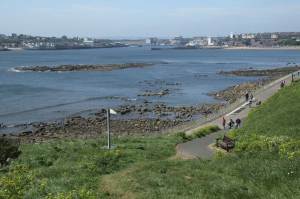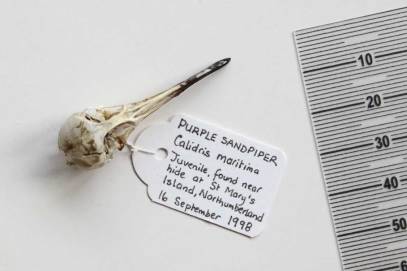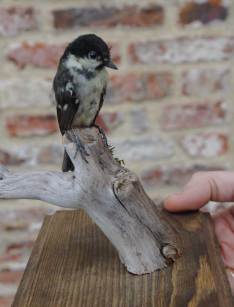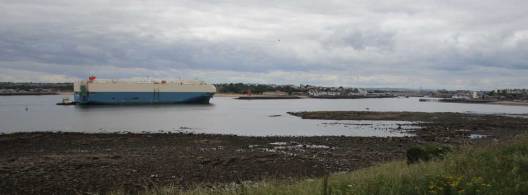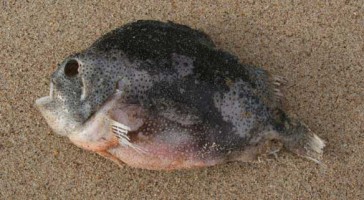Bird Diary, 2017 - 2018
These are my own notes and photographs unless stated otherwise.
You may select any photograph to enlarge it.
Tyne river mouth, Sunday 27 May 2018
My survey started as the tide began to rise in temperature of 14 C and moderate northerly breeze. Herring gulls reached 136 in number and a dozen oystercatchers tramped the rocks. Three kittiwakes collected seaweed for their cliff nests while two dunlins in summer plumage graced the Black Middens where sandwich and common terns rested. Two drake eiders paddled and a curlew stepped from rocky pool to rocky pool as ships came and went.
Purple sandpiper, bird of our coast
The photograph below shows a very delicate and fragile specimen, from a wading bird, a purple sandpiper, found at St Mary’s Island, Northumberland on 16 September 1998. The skull was prepared by birder Steve Holliday who has built a wonderful collection of skulls from wildlife over his lifetime. Steve has prepared and stored his specimens from creatures found dead in the wild in the UK and abroad. The scale in the photo is in millimetres.
Coal tit, local and national resident
In the Bird Atlas 2007-11 (Balmer et al, 2013) the coal tit in Britain and Ireland is described as widely distributed, site-faithful, with a relatively sedentary habit and preference for coniferous plantations. Range and abundance has increased nationally since the 1980s likely due to expansion of their preferred habitat and availability of winter food in gardens. The Birds of Durham (Durham Bird Club, 2012) mentions autumn coastal movements of likely quite local individuals, but also involving some birds showing characteristics of the continental race. Pictured is a taxidermy specimen: a juvenile coal tit found dead at Tynemouth (Tyne and Wear) in June 2017. The finder, Mel Rigg, held the base of the mounted bird outside the Old Low Light, North Shields fish quay, as the photograph was taken (14 December).
Tyne river mouth, Monday 26 June 2017
An adult kittiwake was watched trying to tear seaweed pieces from a rock at the water’s edge. However, if this was for a new nest, there would be insufficient time left to lay and raise a clutch before summer was past. One or two common gulls were present, one year old, and a single black-headed gull of similar age with full dark hood of summer. A few cormorants and oystercatchers showed at the Black Middens and a female goosander steamed low, close to the rocks. All of today’s drake eiders were in immature plumage.
River Tyne, Tuesday 28 March 2017
An interesting Tyne river mouth low tide survey revealed three immature great black-backed gulls tackling, for their lunch, male lumpsuckers with bright orange bellies. Each gull was in a different location on the Black Middens at the water’s edge with their prey, one of which wriggled. There were another forty of these large gulls in the river mouth, mostly birds in their first and second years. A chiffchaff sang at Priors Park (Tynemouth), but a Spring sandwich tern was yet to be seen. A few kittiwakes paddled near the north pier just over from their nesting ledges beneath the old stone priory. There were nine eider ducks and a small count of eleven cormorants, four of which were in immature plumage.
North Shields Fish Quay – early January 2017
During the three days of 13-15 January a first-winter glaucous gull was present at the fish quay. Quite a large and dark individual, my photograph shows it in flight (flying right) with the Tyne north ferry landing area in the background. Its tail has a slight gap, perhaps a missing feather. During this period another large first-winter glaucous gull was present, a paler individual than the first. In the late afternoon of 15 January what was likely a third first-winter glaucous gull attended, quite a small individual. A first-winter Iceland gull was also present over this three day period, likely the bird I first spotted there on New Year’s Eve. This Iceland gull is shown in the second photograph, with a watery background, in flight facing left with wings uplifted. Both of these gull species hail from the arctic.


